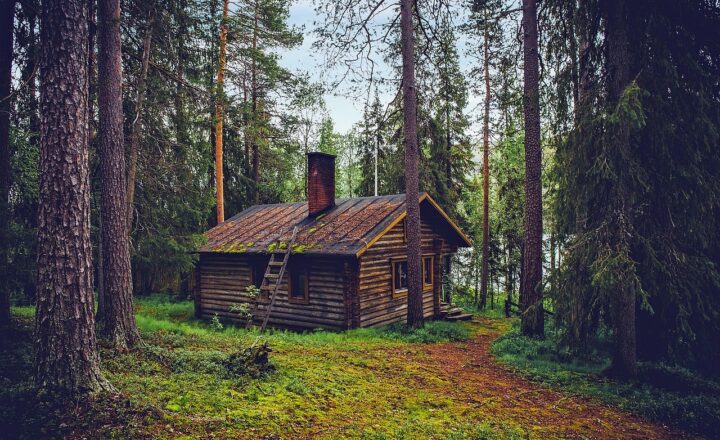How to Develop an Eco-Friendly Home on a Budget with DIY Projects
November 11, 2024

Creating an eco-friendly home doesn’t have to mean spending a fortune. In fact, many sustainable practices can be easily adapted into your home through do-it-yourself (DIY) projects. Embracing sustainability not only benefits the environment but can also improve your quality of life, making your home a healthier place to live. This guide will provide you with various eco-friendly DIY projects that can transform your home without breaking the bank.
1. Understanding Eco-Friendly Living
Eco-friendly living means making choices that are conscious of the environment and its resources. This can involve using sustainable materials, reducing waste, conserving energy, and supporting local economy practices.
Making eco-friendly adjustments in your home not only lowers your carbon footprint but often leads to long-term savings by reducing utility bills and waste management costs.
Key Benefits of Eco-Friendly Living:
- Reduced environmental impact
- Lower energy costs
- Increased home value through sustainable upgrades
- Improved health and comfort with better air quality
2. DIY Eco-Friendly Projects to Try
Here’s a list of practical and budget-friendly DIY projects that you can implement in your home to make it more eco-friendly:
A. Upcycling Old Furniture
Instead of throwing away old furniture, consider giving it a new life through upcycling. Not only is this a cost-effective alternative, but it also reduces landfill waste.
– Example Project: Transform an old dresser into a charming bathroom vanity. Sand it down, paint it with eco-friendly paint, and replace hardware to suit your style. This project adds character to your space and promotes recycling.
B. Create a Rainwater Harvesting System
Using rainwater to irrigate your garden can significantly cut down on your water bills.
– Example Project: Install a rain barrel or a storage container under your gutter downspout. Make sure to use a screen to keep out debris and mosquitoes. This DIY project is simple yet highly effective.
C. Build a Compost Bin
Composting not only diverts organic waste from landfills but also creates nutrient-rich soil for your garden.
– Example Project: You can easily build a compost bin using wooden pallets. Lay the pallets on their sides to create walls and secure them with screws. Add a lid if you want to keep it tidy and under control.
D. Solar-Powered Outdoor Lighting
Using solar-powered lights is a great way to enhance your outdoor space while minimizing electricity costs.
– Example Project: Instead of standard outdoor lights, opt for solar garden lights. You can find a variety to choose from, or even build your own using solar panels and LED bulbs with instructions available online. These illuminate your pathways and garden at night without the energy waste.
E. DIY Insulation Upgrades
Improving insulation can significantly reduce energy use and costs.
– Example Project: Use weather stripping or caulk to seal drafts around windows and doors. You can also use reclaimed materials for insulation in your attic or walls. This project helps maintain indoor temperatures and reduces heating and cooling costs.
3. Choosing Sustainable Materials
When embarking on any DIY project, consider utilizing sustainable materials that are less harmful to the environment.
– Bamboo: A fast-growing grass that is incredibly strong and durable while being eco-friendly.
– Reclaimed Wood: Great for furniture projects as it reduces deforestation and promotes recycling.
– Low-VOC Paints: These paints minimize harmful emissions, resulting in better indoor air quality.
Involving sustainable materials in your renovations not only enhances the aesthetics of your home but also contributes to conservation efforts.
4. Energy Efficiency Tips
Alongside DIY projects, practicing energy efficiency can further reduce your home’s environmental impact. Consider these tips:
– Perform regular maintenance on HVAC systems to improve efficiency.
– Use energy-efficient appliances and LED lighting.
– Adjust your thermostat—lowering it in winter and raising it in summer can lead to significant savings.
By implementing these energy-efficient practices, you’re promoting eco-friendly living while saving money on utility bills.
5. Conclusion
Developing an eco-friendly home on a budget is entirely achievable through creative DIY projects and conscious choices. Not only do these initiatives enhance the sustainability of your residence, but they also foster a sense of community and connection with the environment. Remember that every little bit helps, so begin your journey towards an eco-friendly home today. By taking action, you contribute positively to the planet and enhance your quality of life.
Make your home a sanctuary that reflects your values and commitment to sustainability through practical, cost-effective DIY projects. You’ll be amazed at the difference these changes can make to both your home and the environment.







